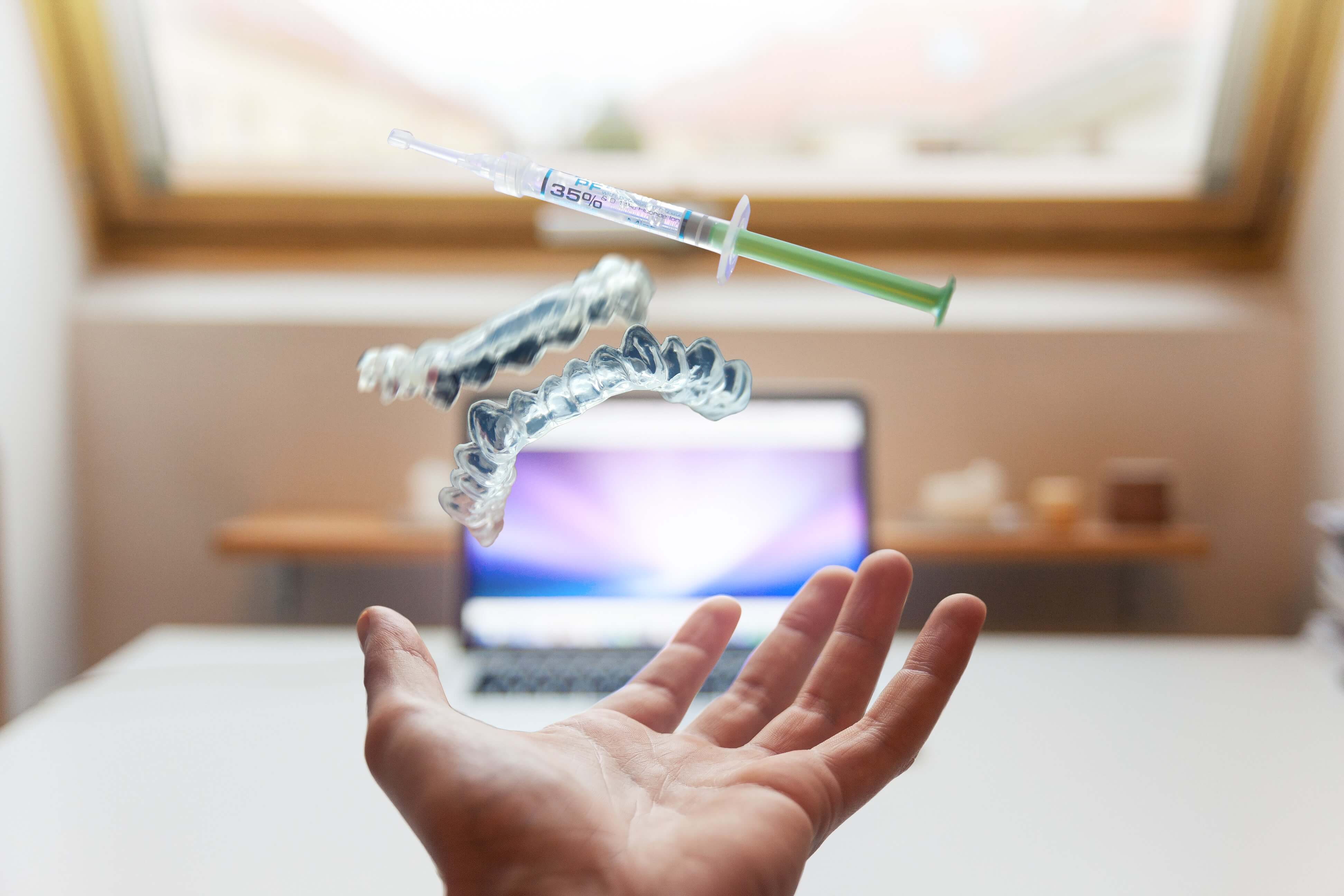Teeth Whitening
Want a brighter smile? When it comes to tooth-whitening, you've got two options: in-office-based teeth bleaching, or at-home care. Both tooth-whitening options use peroxide-based bleaching agents. At- home systems contain from 3% to 20% peroxide (carbamide or hydrogen peroxides). In-office systems contain from 15% to 43% peroxide.

Generally, the longer you keep a stronger solution on your teeth, the whiter your teeth become. However, the higher the percentage of peroxide in the whitening solution, the shorter it should be applied to the teeth. Keeping the gel on longer will dehydrate the tooth and increase tooth sensitivity.
There are pros and cons to each option, but before you try at-home tooth-bleaching kits, be sure to talk to your dentist. Bleaching will not whiten porcelain crowns or composite tooth-colored bondings.
Teeth whitening done by your dentist can get teeth brighter faster. The bleaching solution is usually much stronger than at-home kits. Also, heat, light, or a combination of the two may be used to speed and intensify the whitening process.
The most dramatic results -- teeth generally get three to eight shades brighter -- usually take several 30- to 60-minute in-office visits.
Tooth bleaching can make teeth temporarily sensitive -- or be uncomfortable for people who already have sensitive teeth. When used incorrectly, home kits can also lead to burned -- even temporarily bleached - - gums.

Is teeth whitening permanent?
tooth-whitening works best for people with yellow teeth and is less effective for people with brown teeth. If your teeth are gray or purple, tooth bleaching probably won't work at all.
Teeth whitening isn't permanent. It can last from a few months to up to 3 years — it varies from person to person. The whitening effect won't last as long if you smoke or drink Carbonated beverages, tea or coffee, which can all stain your teeth.
